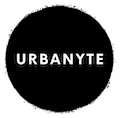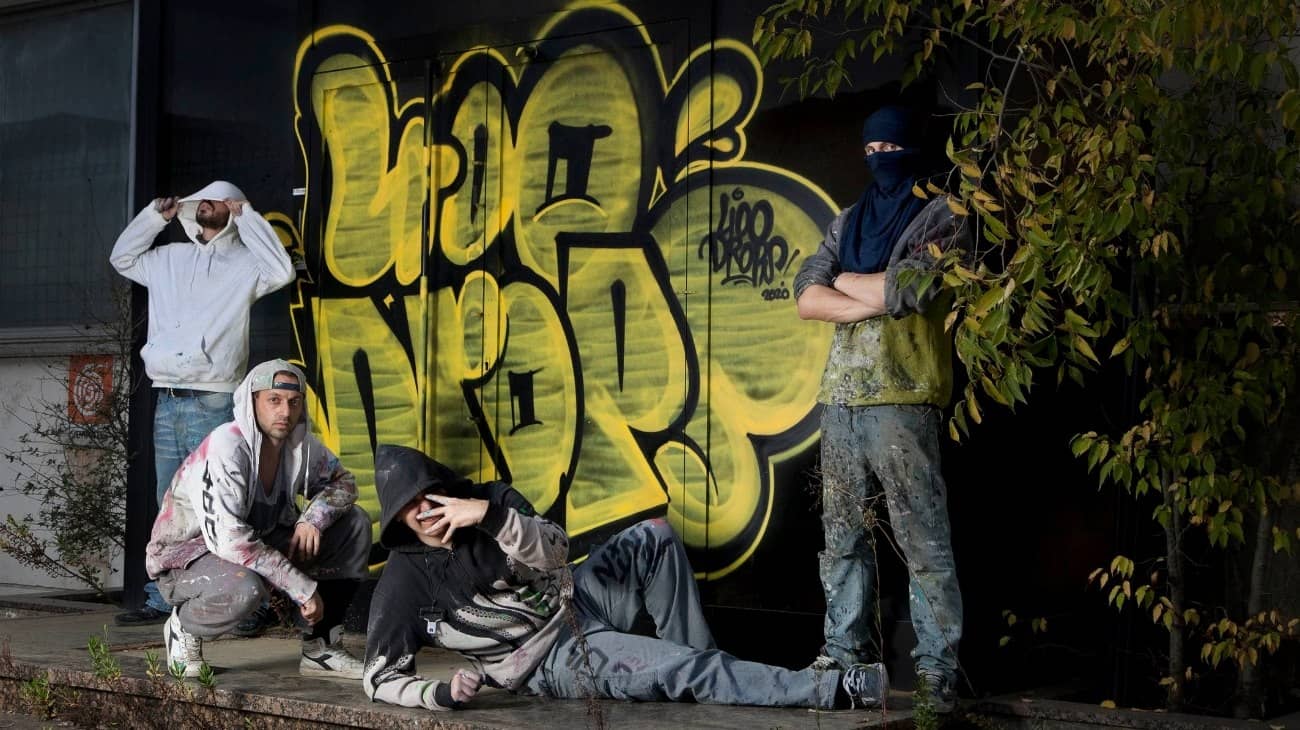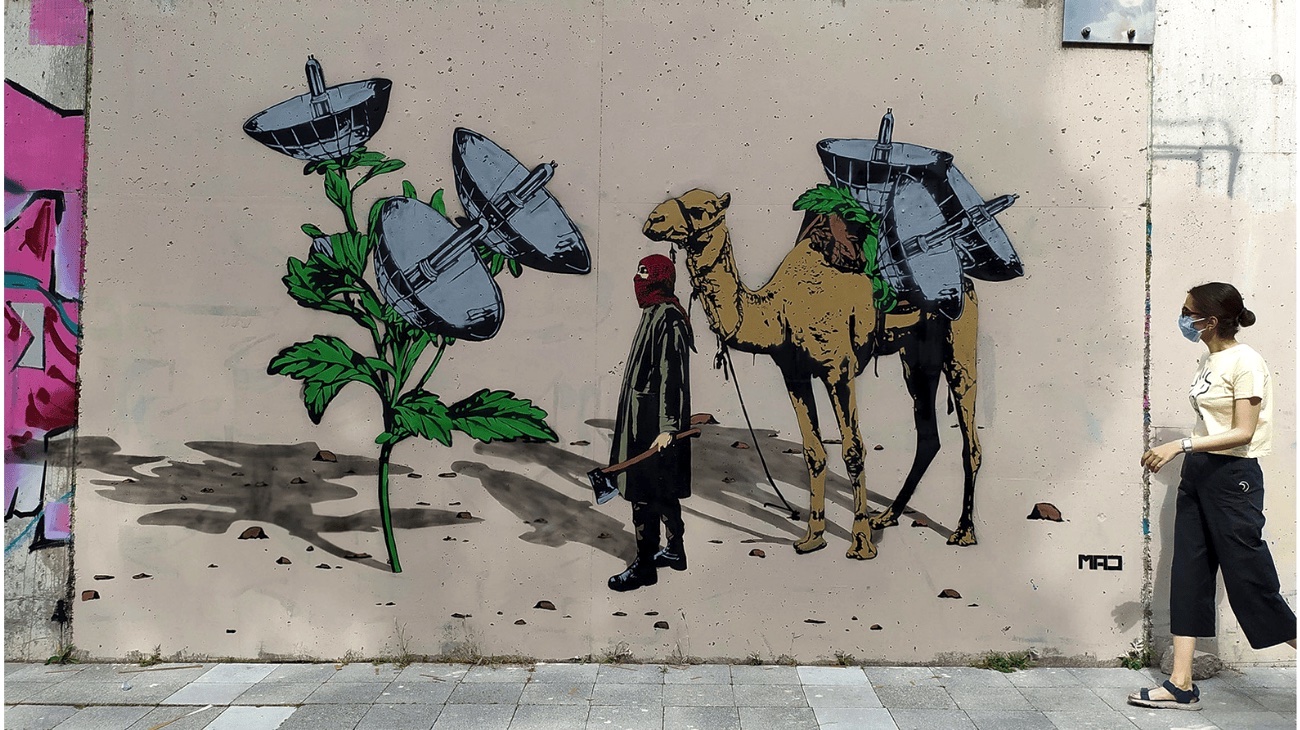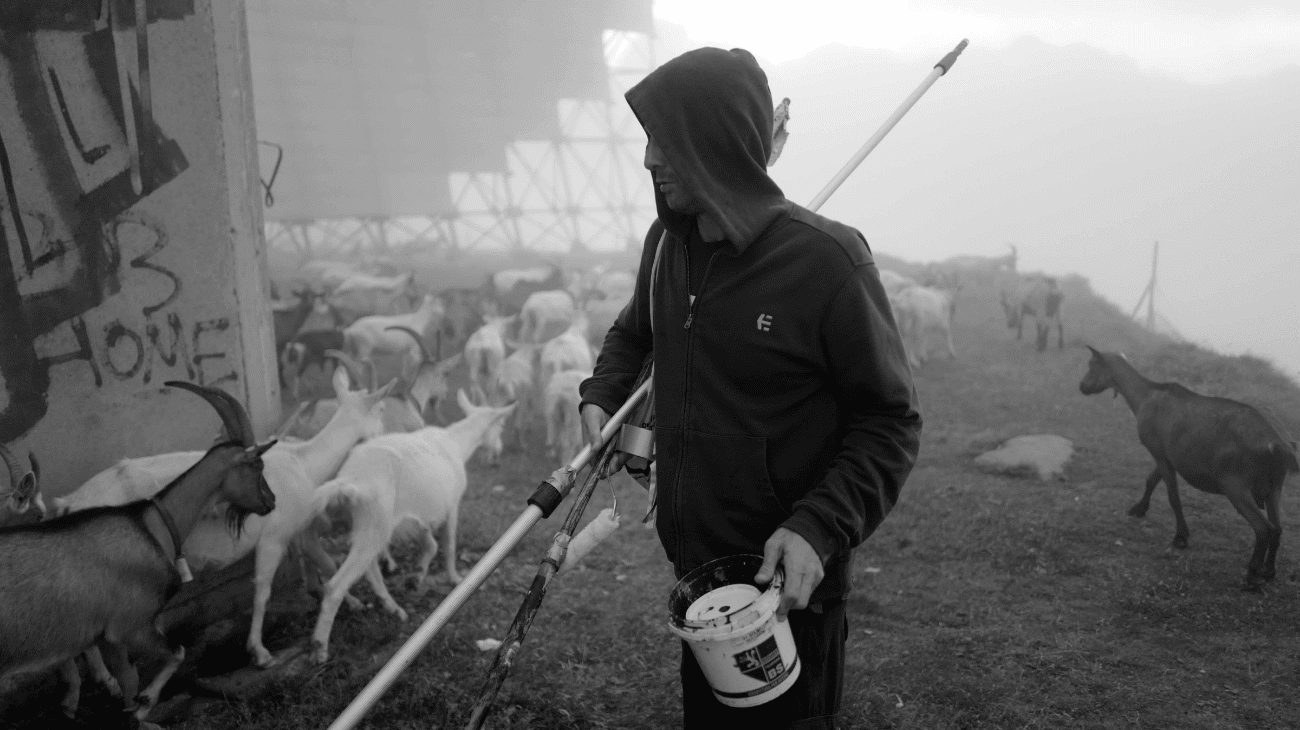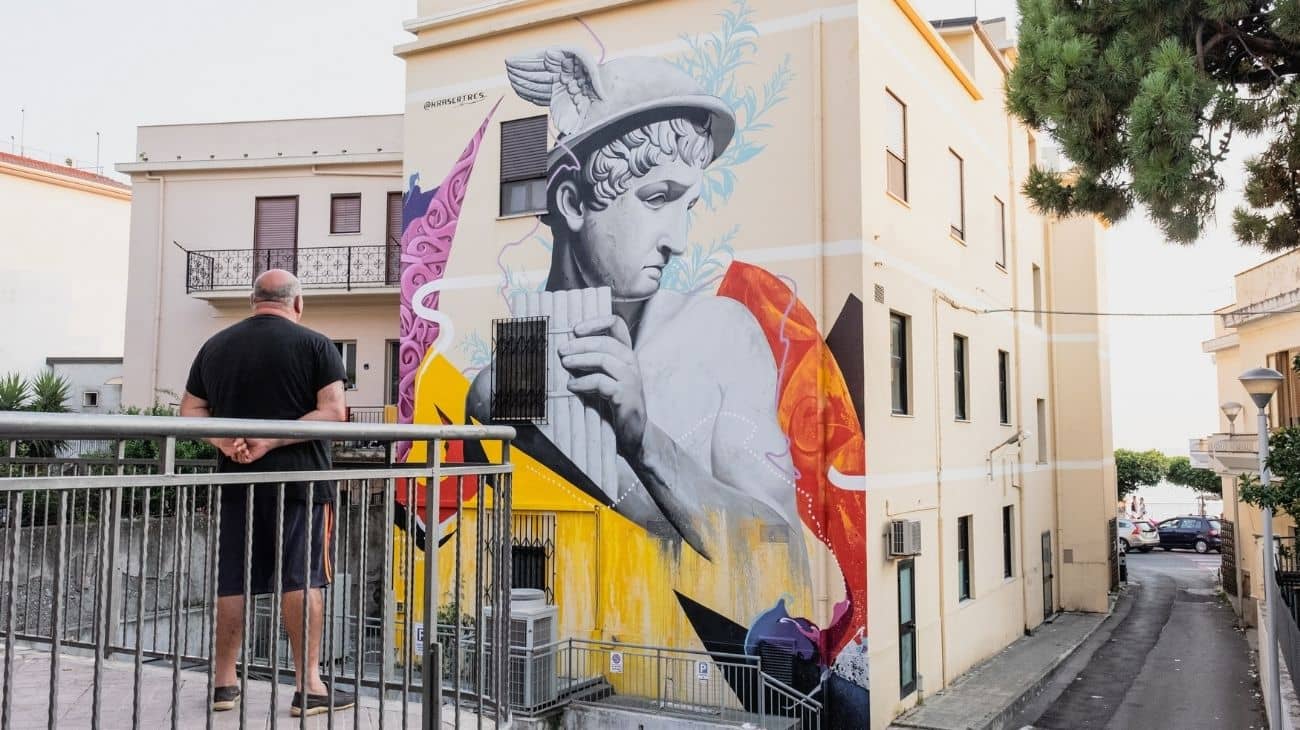
DIAMANTE MURALES 40
Interview with Antonino Perrotta about Diamante Murales 40:
I think that the figure of the urban curator is essential for the synthesis of these projects. It is a professional figure that is still not recognized and not fully formed because we are faced with a new form of art that is gaining ground in cities around the world and is constantly evolving.
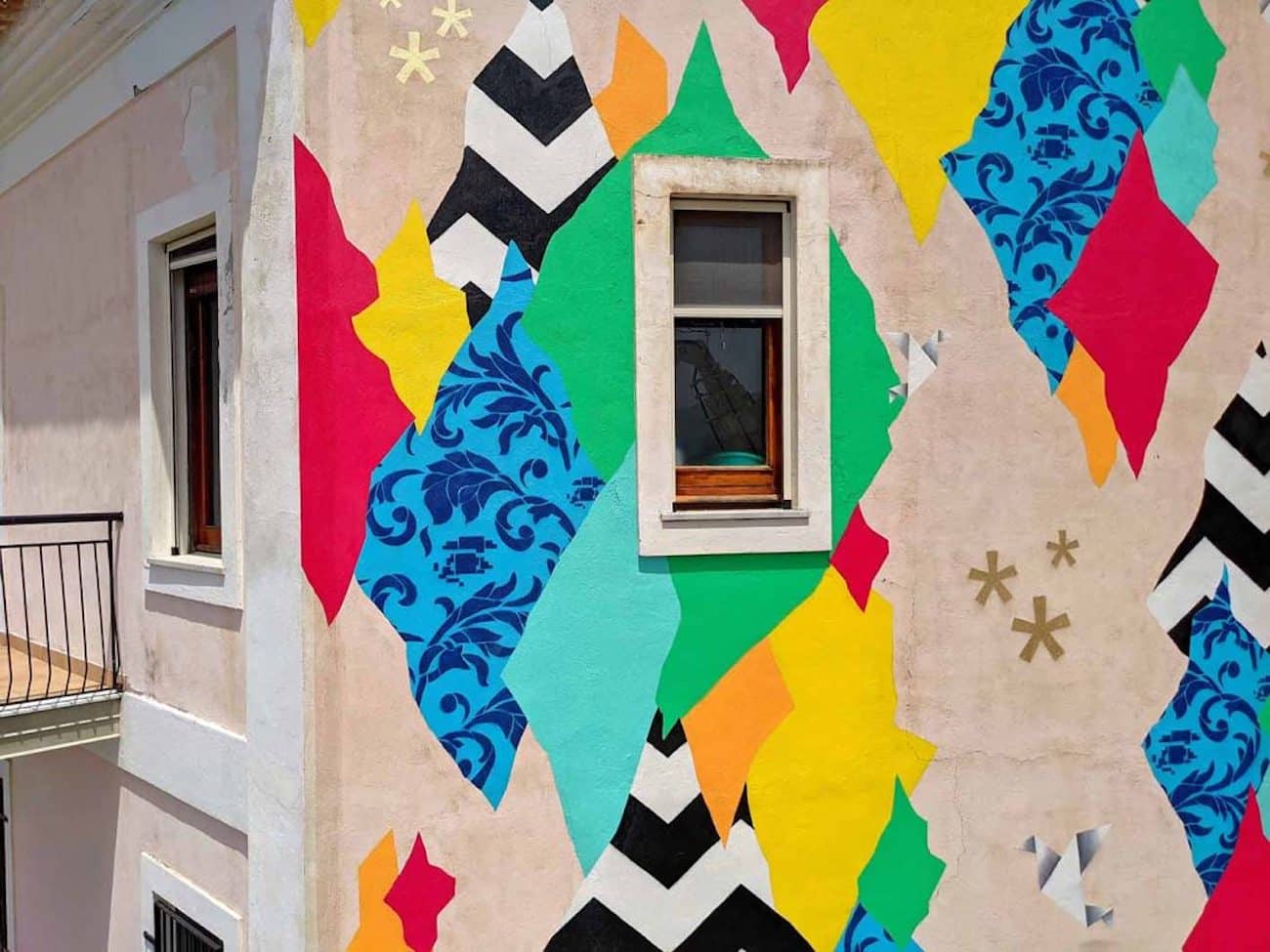
‘Camouflage 87023’ by UNO I Diamante, 2021
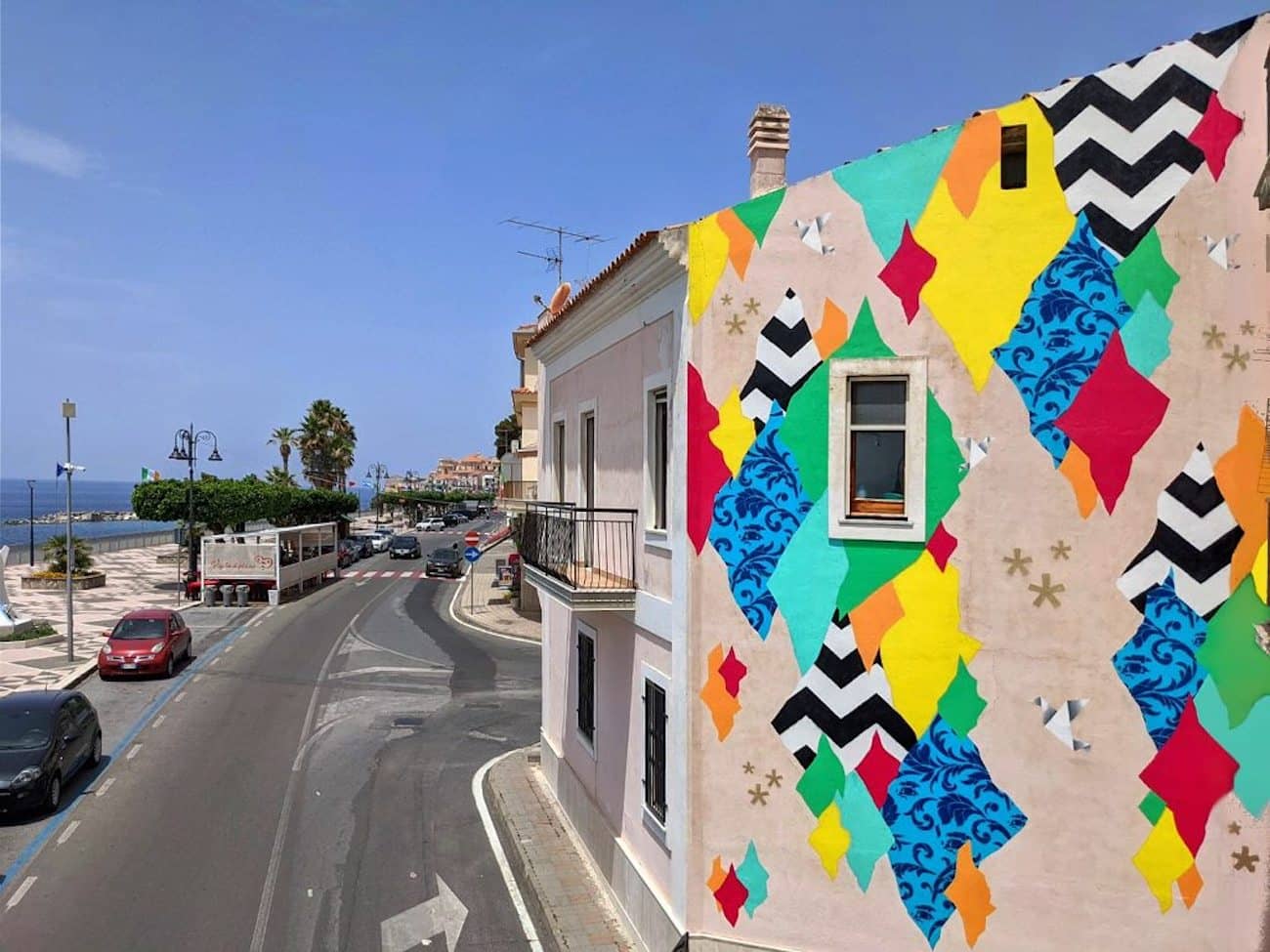
Antonino, you are active not only as a street artist but also as artistic director and founder of the festival OSA – Operazione Street Art that, together with the entities Gulìa Urbana and Manufactory Project, is responsible for the artistic direction of Diamante Murales 40, a festival that celebrates the fortieth anniversary of the first “Operation Murales” in the Calabrian coastal town of Diamante. What can you tell us about yourself, your career, and your different fields of activity as an artist and as an artistic director?
I have had the opportunity and the luck to be both an artist and a curator of an urban project. For the past four years with OSA – Operazione Street Art, I have been in direct contact with both the people who live in the spaces where we work and the artists who donate their interventions. I think that the figure of the urban curator is essential for the synthesis of these projects. It is a professional figure that is still not recognized and not fully formed because we are faced with a new form of art that is gaining ground in cities around the world and is constantly evolving. The experience that you gain in the field is very important. As an artist, I think you acquire more awareness and empathy with respect to the needs of other artists, which is essential for the success of a project.
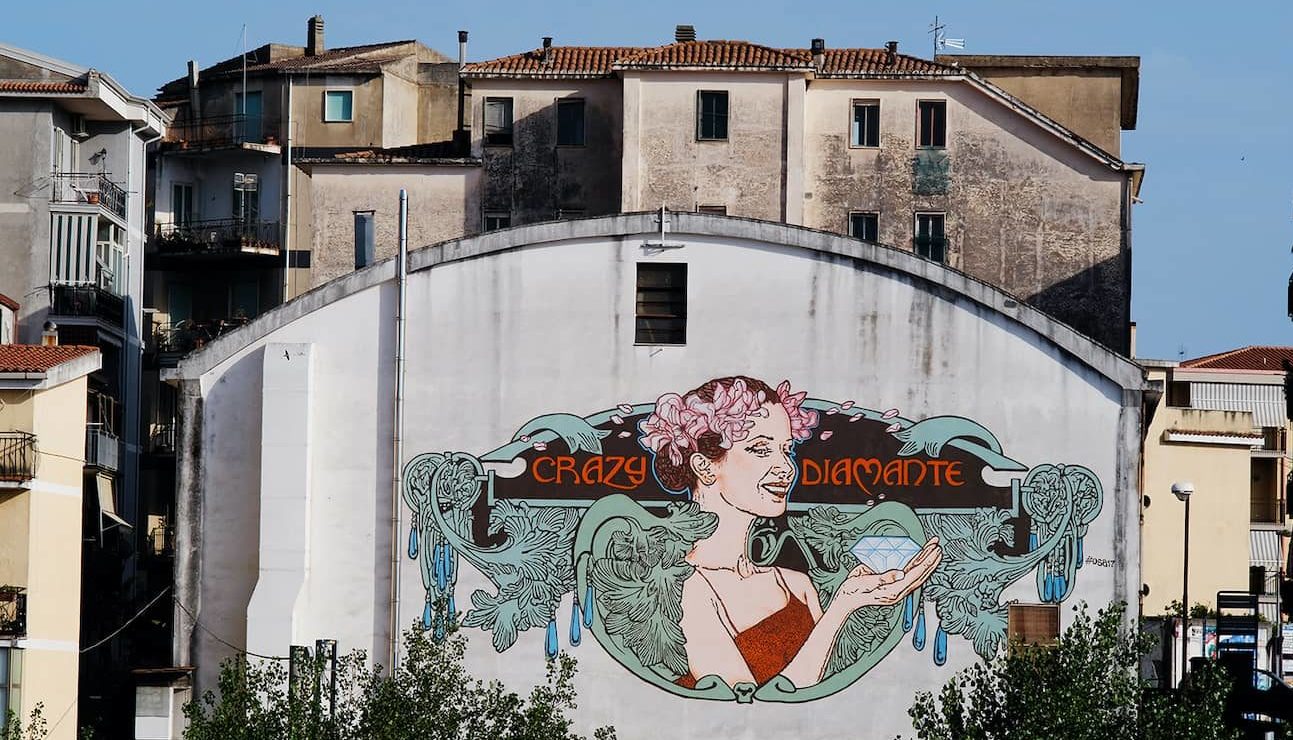
Diamond I Diamante, 2017
OSA – Operazione Street Art is a festival launched in Diamante in 2017 with the aim of continuing the work of preservation and enhancement of the village’s muralistic heritage, started in 1981 by the artist Nani Razetti. How did the story begin that over time has made Diamante one of the most painted villages in Italy, with over 330 murals? How has urban art been chosen as a means of redevelopment of the territory, forty years ago? This was a decidedly visionary and innovative choice, especially at the time.
Diamante must thank Nani Razetti. It is thanks to him that, in 1981, 84 painters from all over the world arrived in Diamante, giving life to the largest and most innovative urban art project in Italy. It was an avant-garde project for the time, a time when the future and the evolution of this movement, which now embraces many cities in Italy, was not even imagined.
Perhaps Nani was inspired by the phenomenon that characterized the entire south of Italy in the 1980s, namely the continuous depopulation of our small towns. It was as if a growing tree were losing its most beautiful branches, those that then would lead to the birth and harvesting of fruit. And while the southern situation was becoming more and more evident, Nani Razetti had a vision: why not make Diamante the town of upturned noses, an open-air museum? That’s how “The City of Murals” was born. And for the city of Diamante it represented the opportunity to develop cultural tourism, becoming over the years one of the most popular destinations in southern Italy.
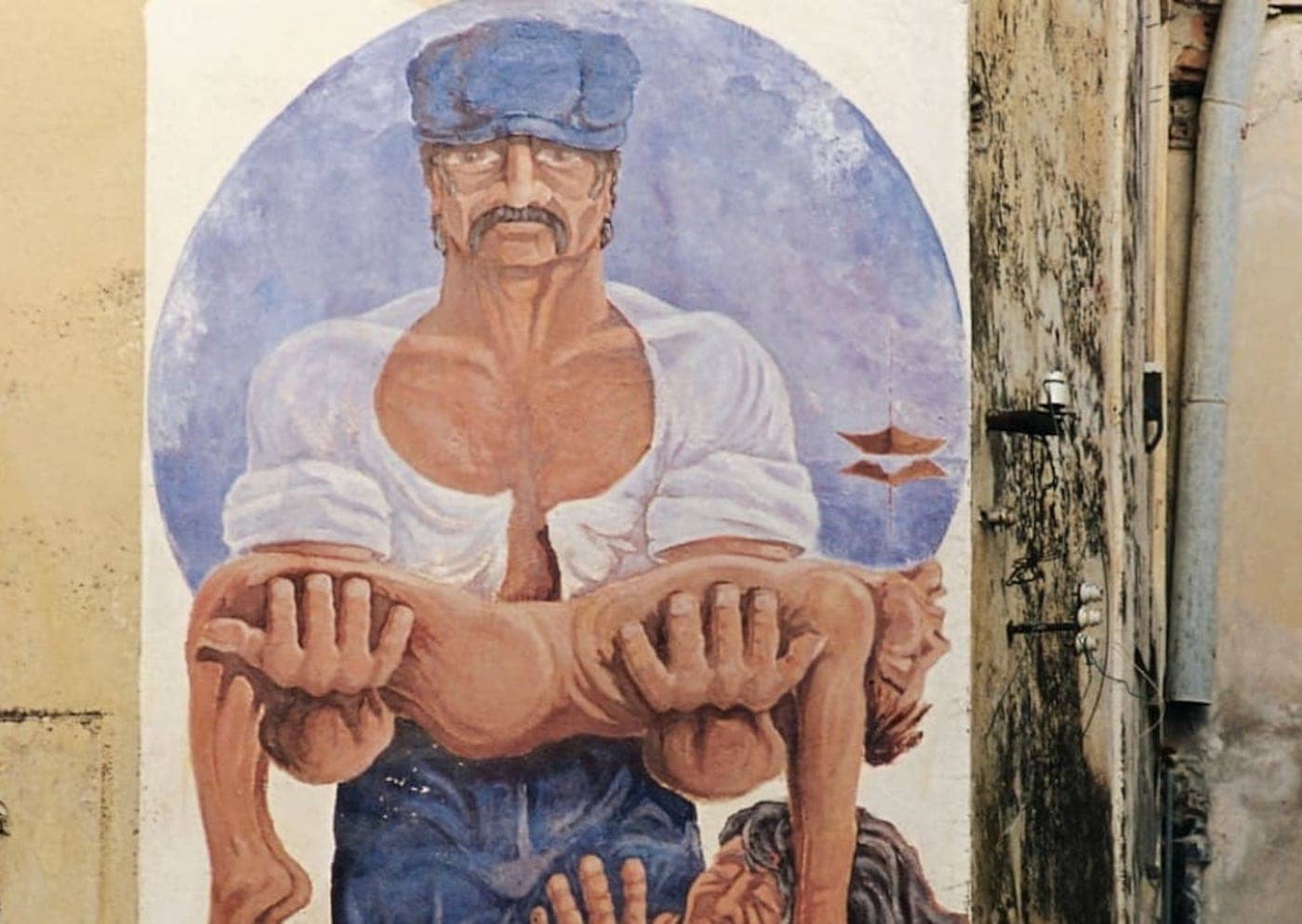
Il Gigante I Diamante, 1981
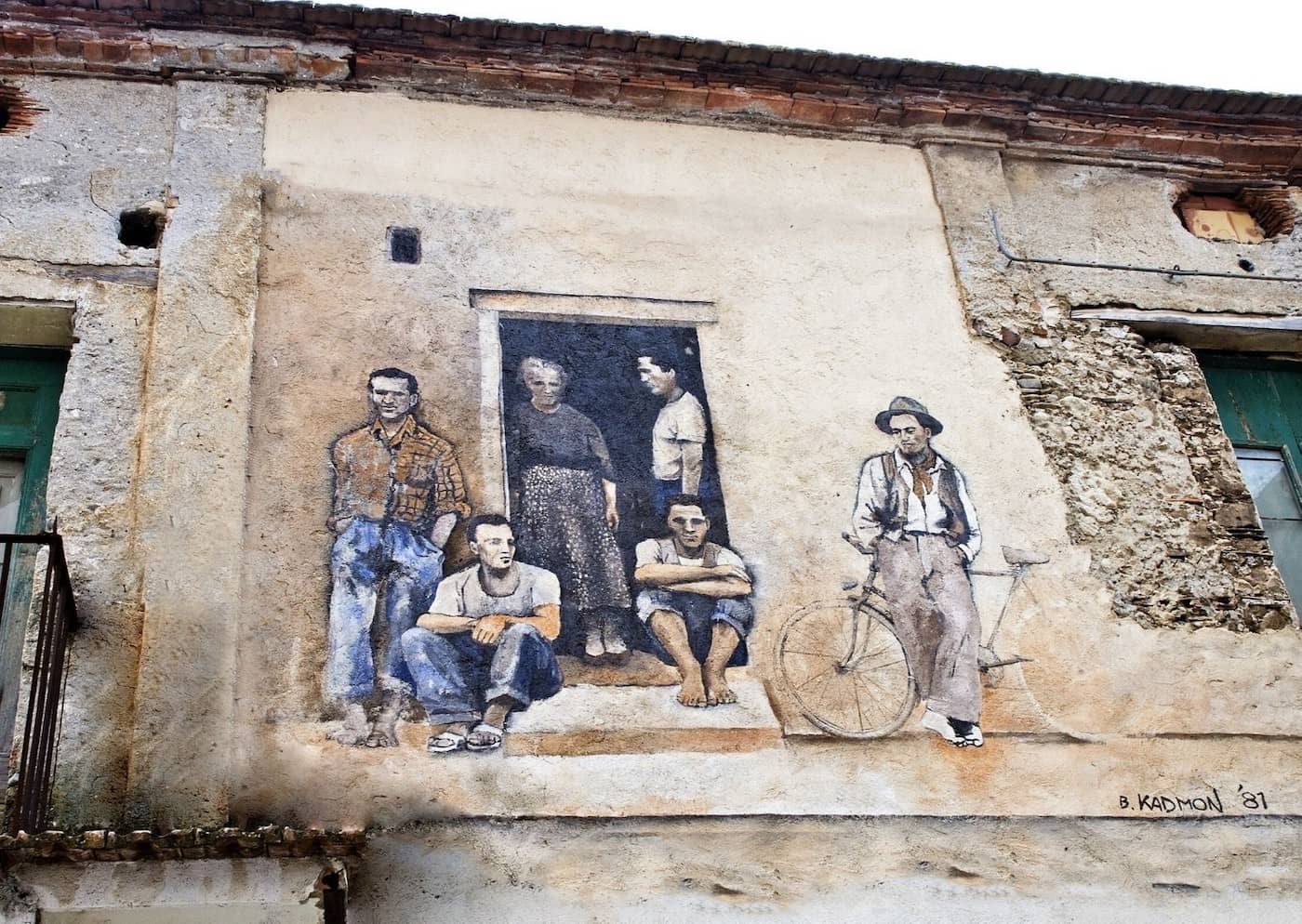
Kadmon I Diamante, 1981
You yourself are Diamantese. How can people who have not yet been there imagine the place of Diamante, “the land of upturned noses”?
For anyone who imagines it but has never been there, I’m sure that experiencing it would leave them open-mouthed. So I recommend that everyone come to Diamante and visit it personally.
The goal of Diamante Murales 40 is to transcend the present in order to overcome, through exchange and collaboration, any kind of border, both geographical and especially mental ones, and to overcome deep-rooted prejudices, giving the world that artistic and cultural beauty that is often lacking. How do you pursue this goal in a practical sense, and how does an active exchange arise?
Through collaboration, sharing of ideas, and sacrifice, unimaginable goals can be pursued. This year we have counted on the collaboration with Gulìa Urbana, a festival that has been working for ten years in Calabria and outside the region, and that has given internationality to our region, bringing dozens of international artists, as well as the collaboration with Manufactory Project, a festival that takes place in the city of Comacchio in the province of Ferrara.
The active exchange takes place by creating a team, working for each other, exchanging roles, if necessary, and working with humility.
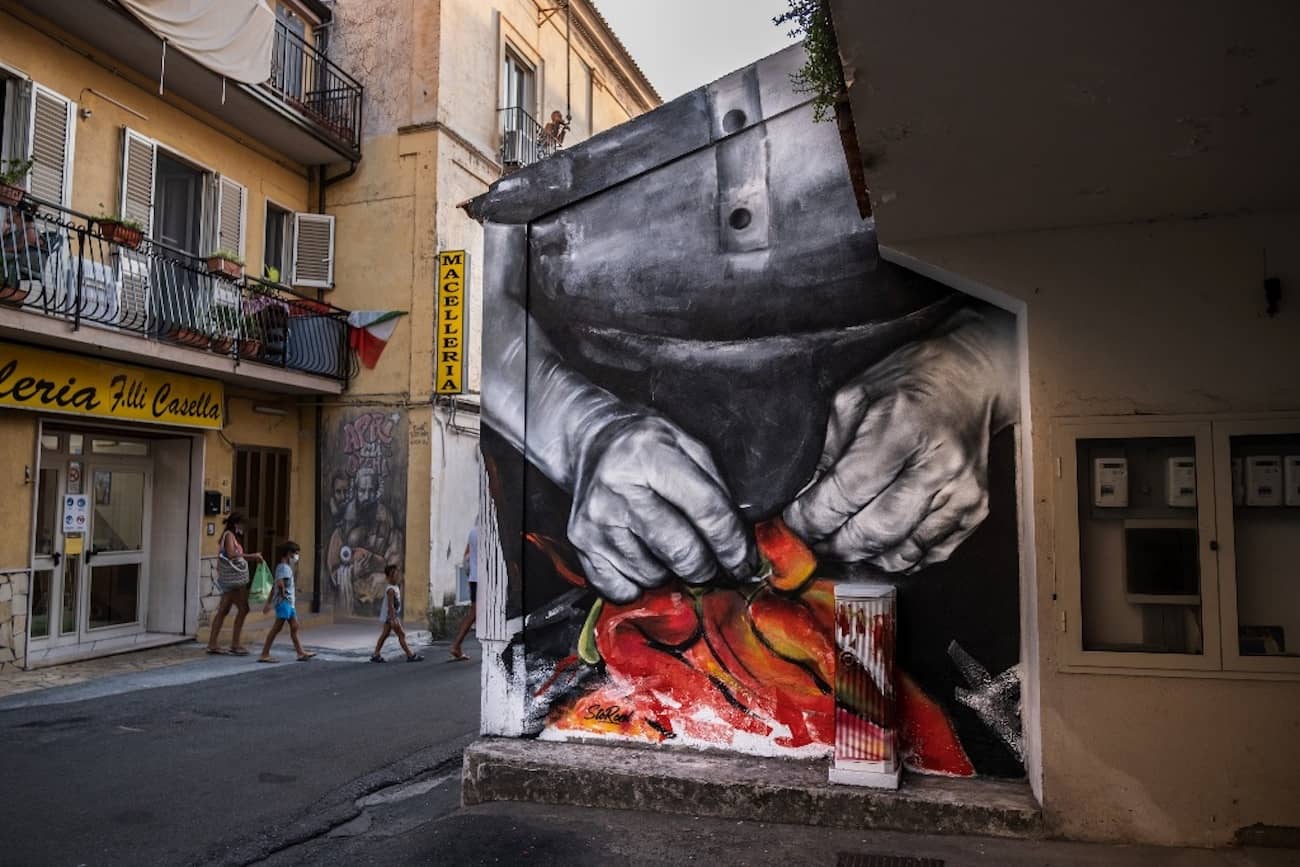
SteReal I Diamante, 2021
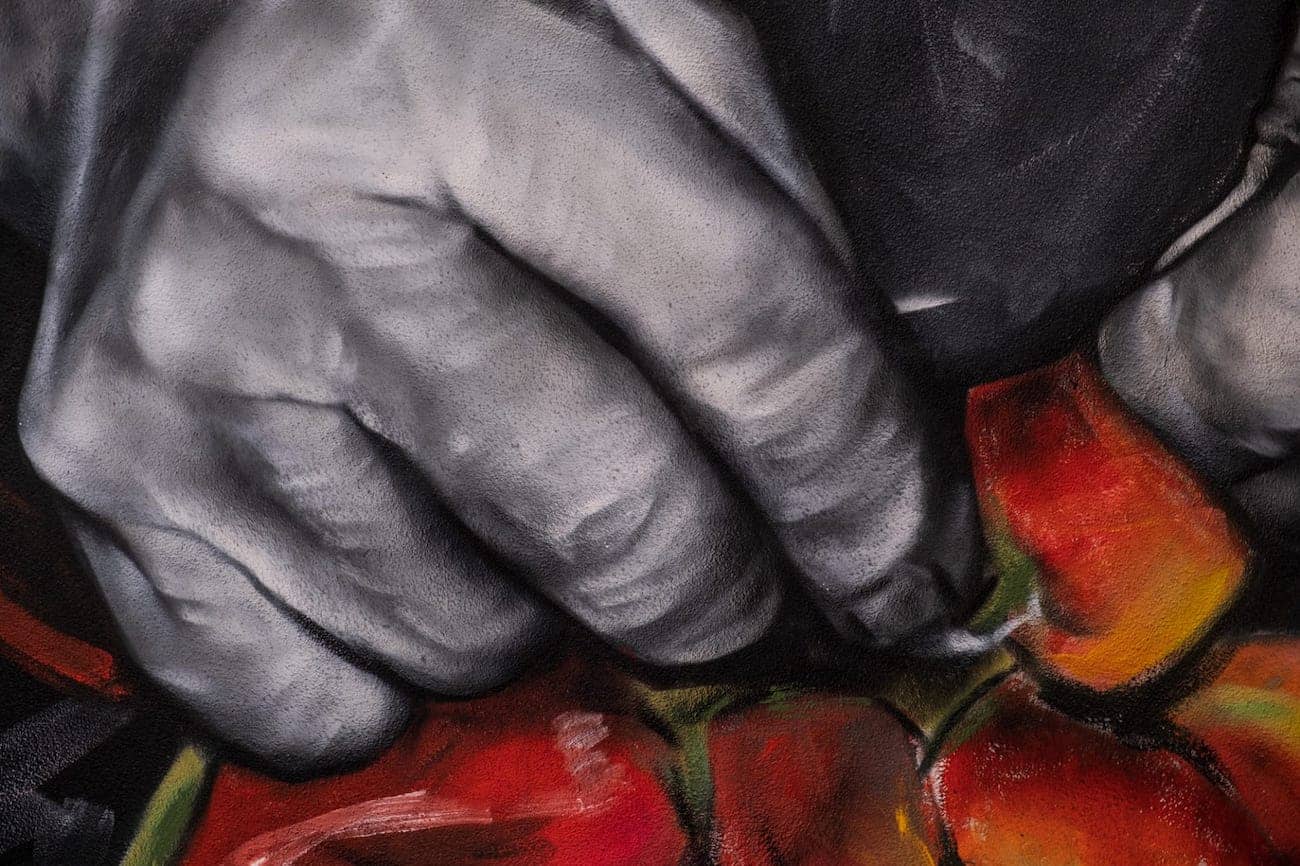
Looking back at past editions of the festival, what were your highlights, and what can visitors expect this year?
I think back to the beginning, to the genesis. It was a venture to bring street art and contemporary art to a city like Diamante, where there was already a project with an identity, and it is no coincidence that the name OSA comes from the Italian word “osare”, which means “to dare”. I think that those who have followed us over the years have noticed the evolution and this year certainly have one more reason to come and see the new interventions that complete the path started in 2017.
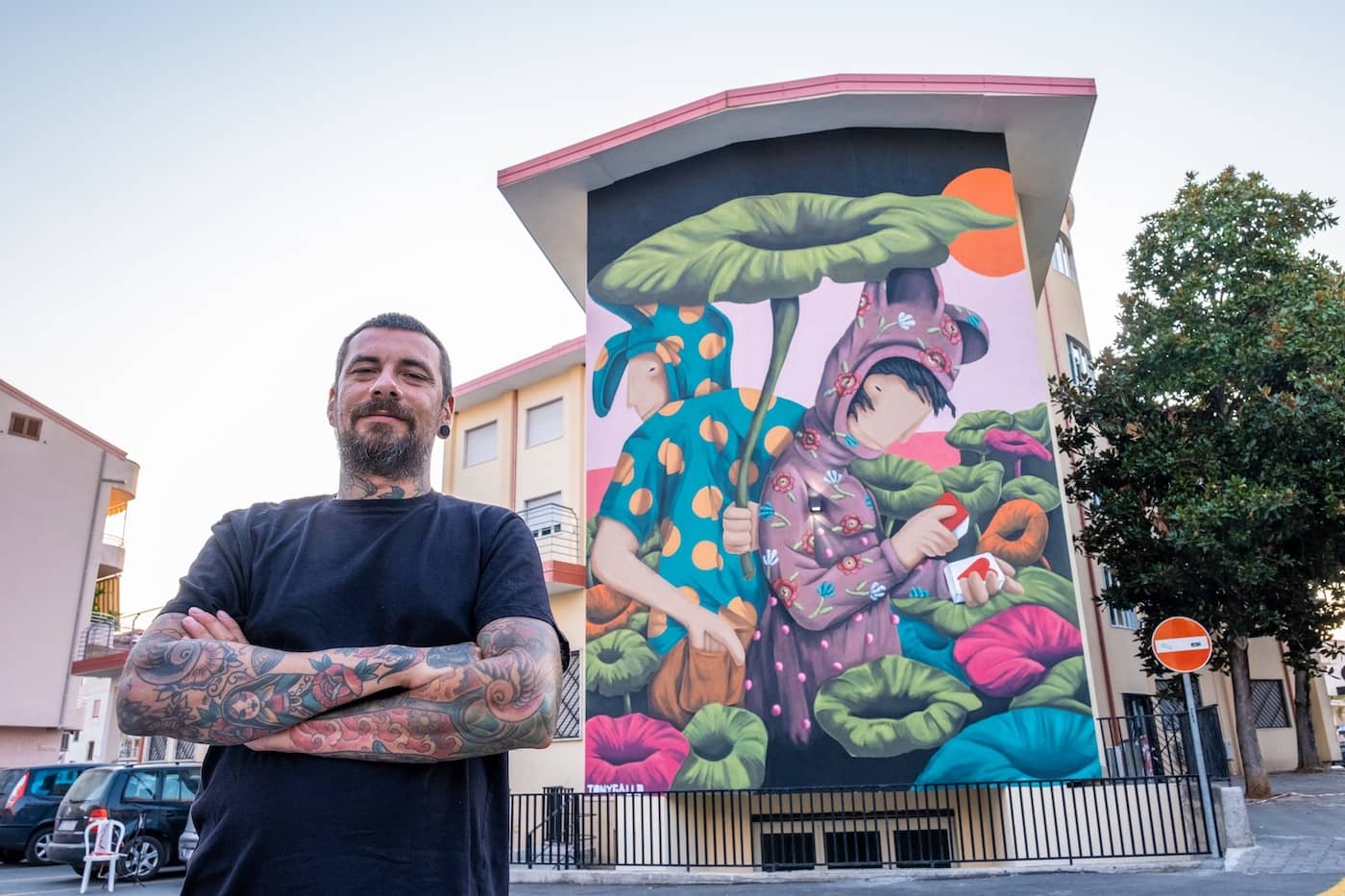
Tony Gallo I Diamante, 2021
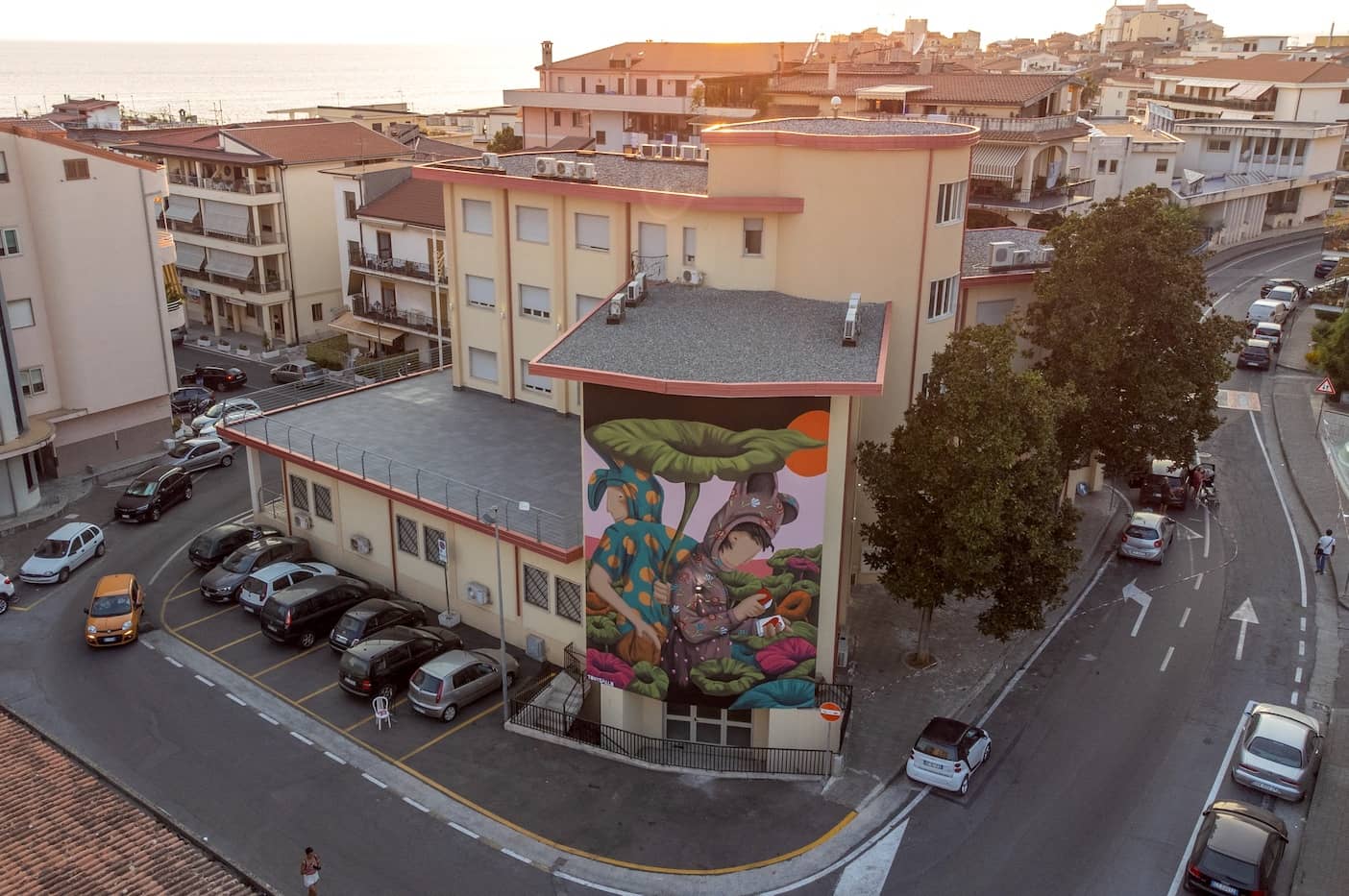
You have invited artists such as Tony Gallo, Kraser, SteReal and Jorit for the current edition of the festival. What criteria were used to select the participating artists?
The selection was the result of a discussion between the three artistic directors (Giacomo Marinaro, Riccardo Buonafede, and me). It was a constructive conversation that led to the selection of the artists, relating the styles to the available surfaces. The mural is the result of months and/or years of study.
Were there any guidelines for the artistic design or message of the works? Or were the artists completely free in their choice of motifs?
We allowed the artists complete freedom. We know that contemporary artists develop recognizable styles and languages, dealing with specific themes that reflect their art. By choosing the artist you automatically choose a theme.
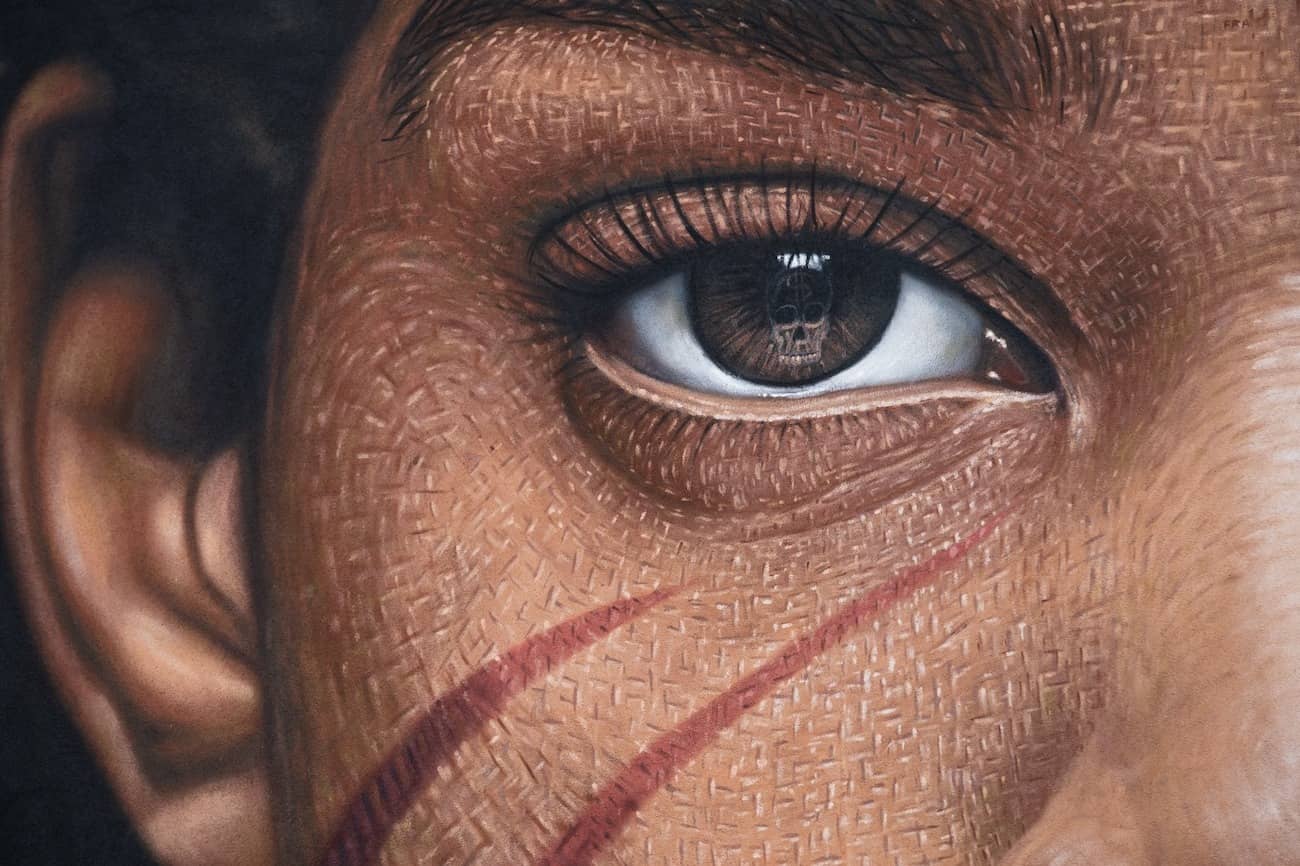
Jorit I Diamante, 2021
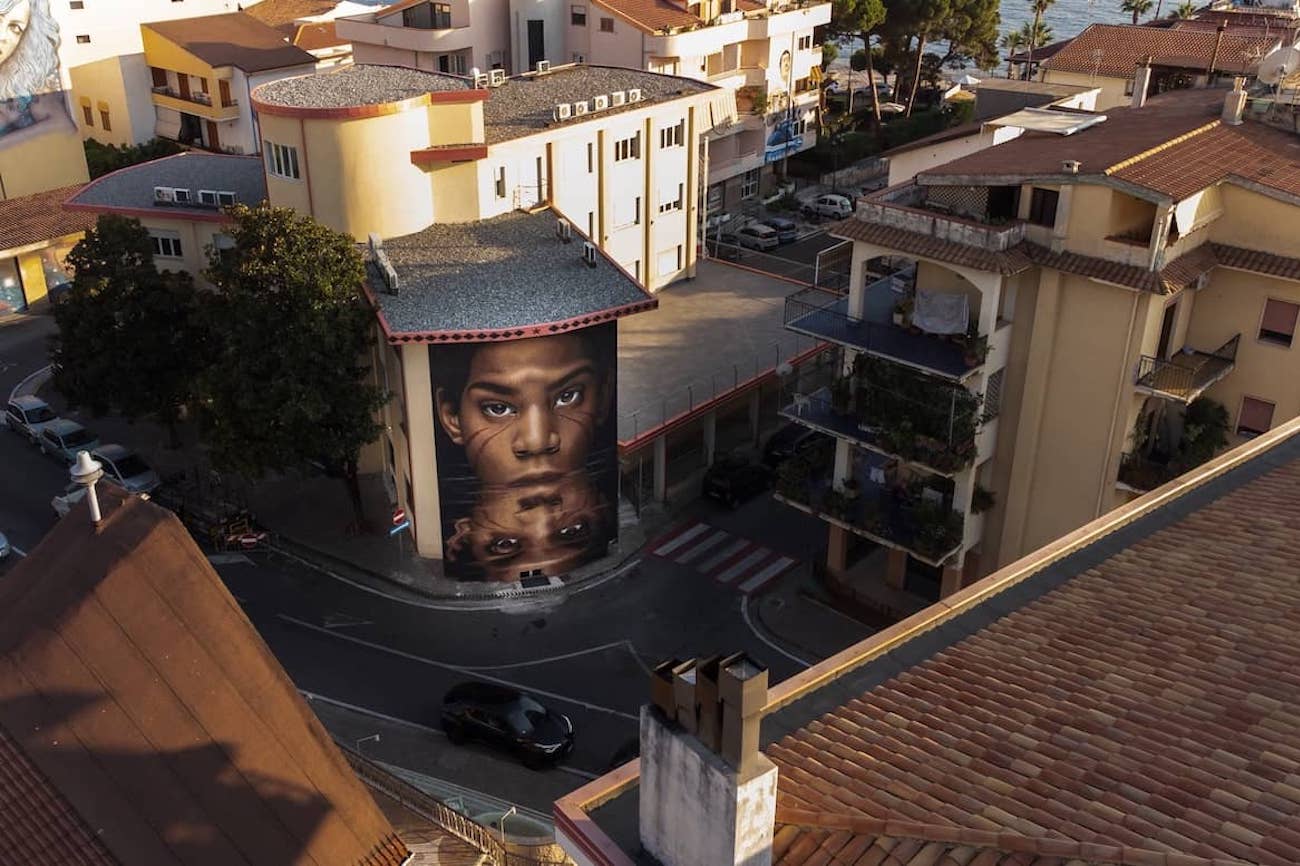
The goal of the festival is not only to create new works, but also to preserve and restore important works from 1981. What are these works? What are the challenges of restoring urban art?
This year we restored two works, which were about to disappear, by two important artists from 1981, Ibrahim KODRA and Eva KUMP. Urban art is born with the knowledge that it is destined to disappear in a short period of time. These two works, however, like so many others, were still partially visible after forty years. In 1981 no one perhaps imagined that, after forty years and in a town by the sea, these works would survive. It would be nice to be able to restore them all, but such an operation would have huge costs and take such a long time that it could only be supported by a possible intervention by the Ministry of Cultural Heritage, if they would show interest. Even though so many years have passed and so many important artists were involved, the artistic patrimony of Diamante is still not recognized by any supra-municipal body in Calabria.
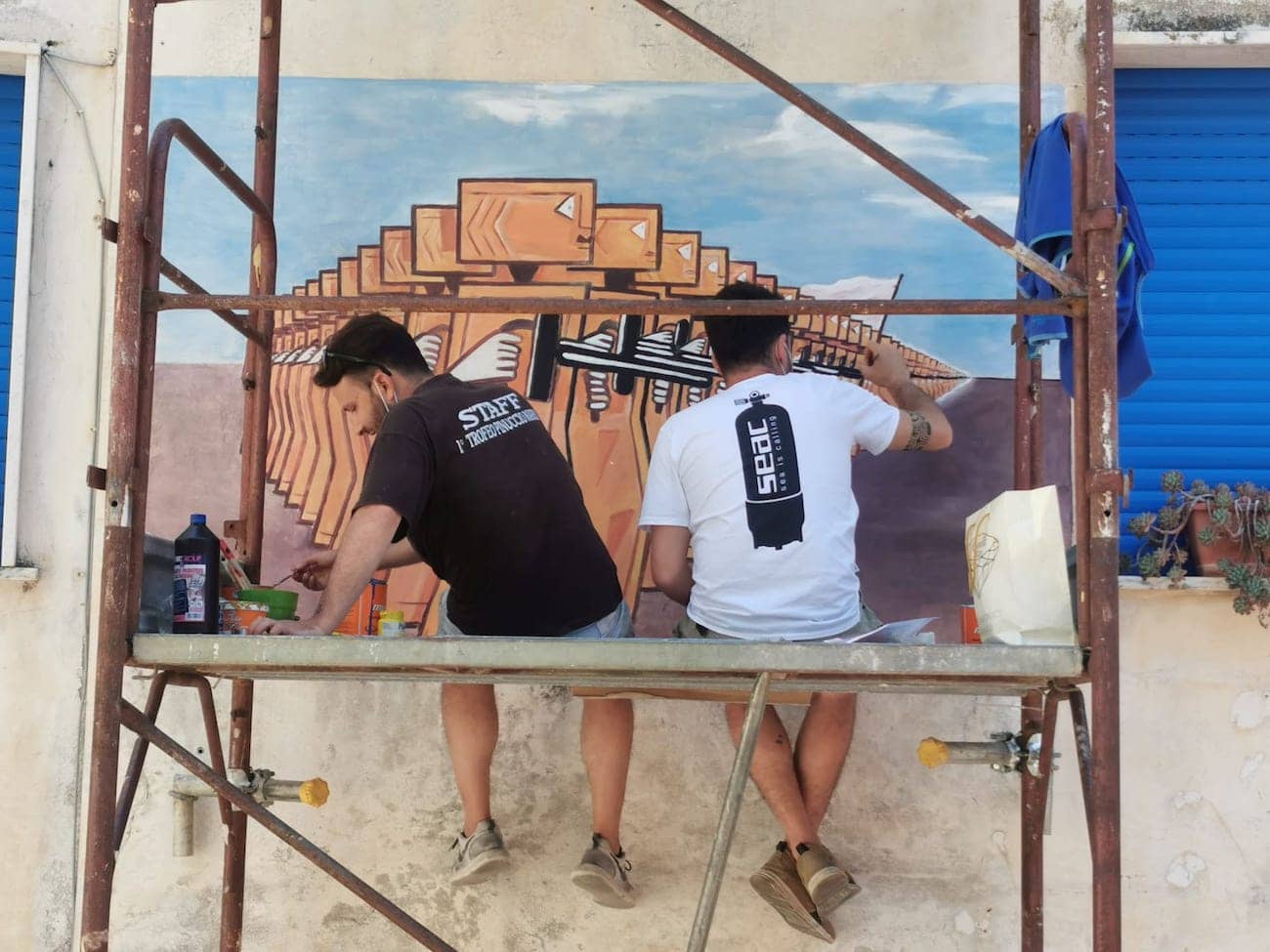
Restoration of KODRA’s work
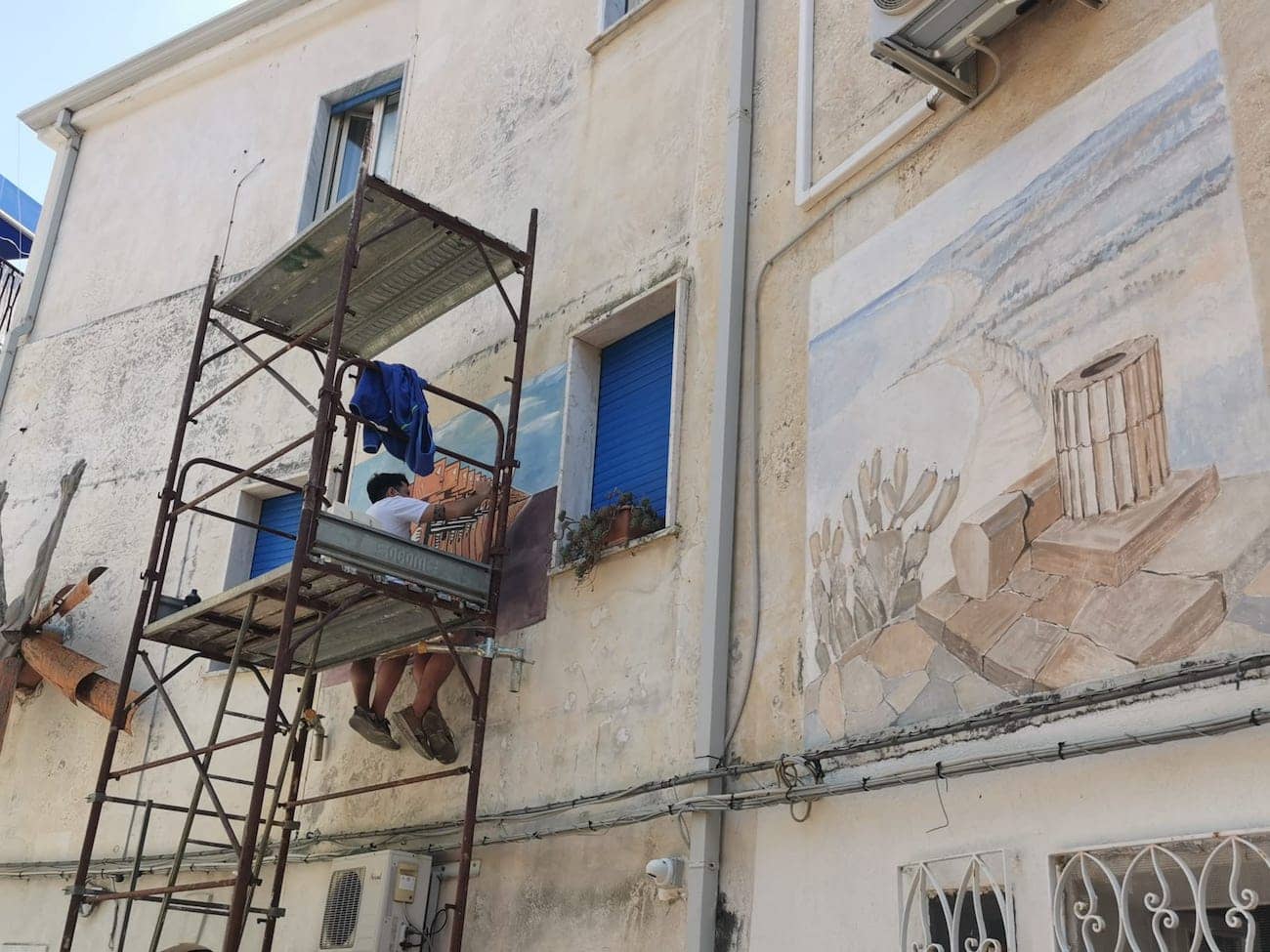
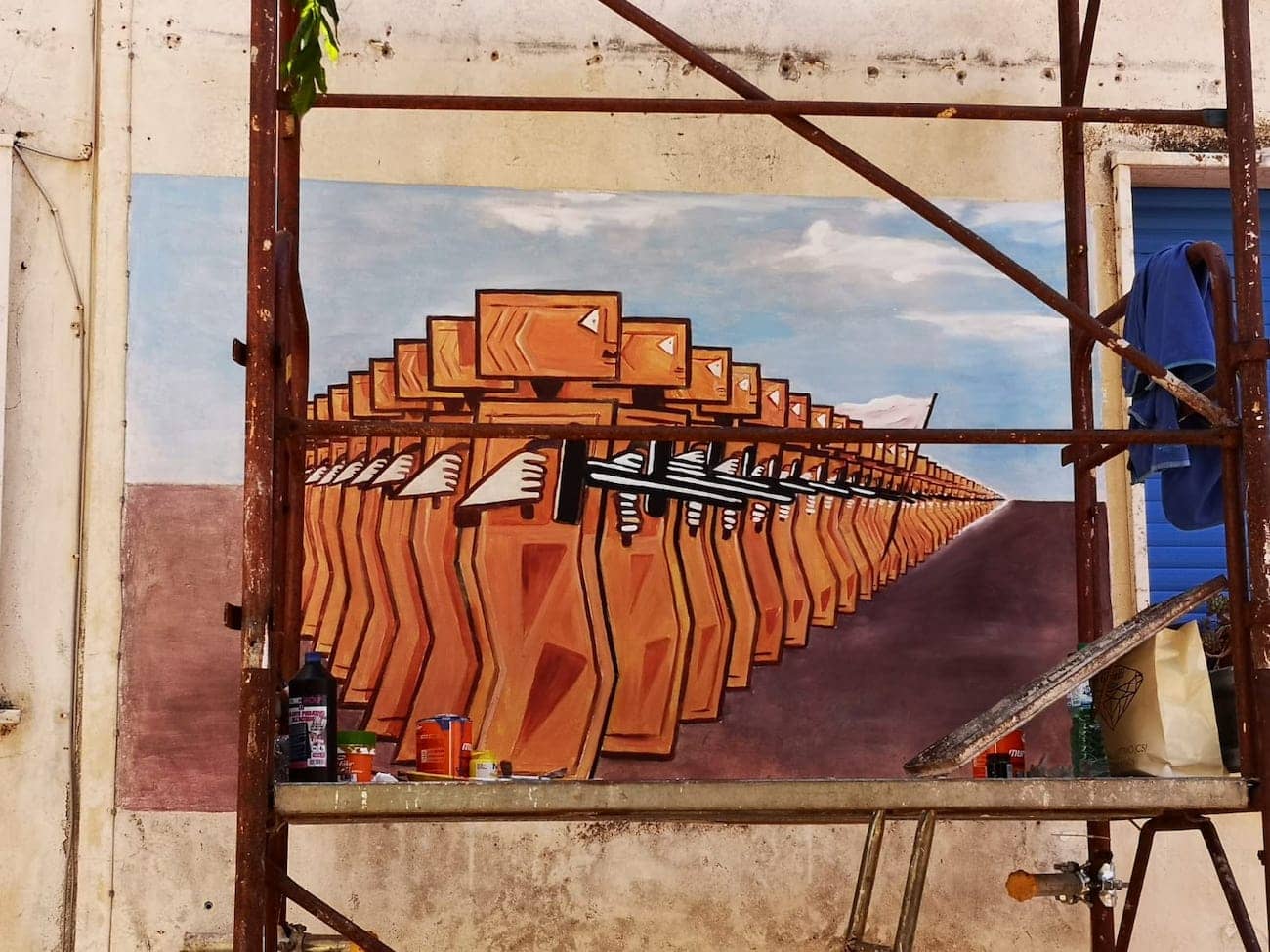
KODRA’s work after the restoration
Diamante Murales 40 spans a long period, from June to December this year. How does it look behind the scenes of such a large event? Aside from the three-part direction, how many people are involved, and how is the planning and organizing done?
I would also count the months of planning. An event this large needs two-thirds more preparation and planning than the duration of the event. Officially we started in June, but we’ve been working on the event for months and years, maybe dreaming of bringing certain artists together or using certain surfaces. There are four fundamental aspects that need to be taken care of perfectly:
– Logistics, which concerns everything that has to do with the realization of the work, from the identification of the dates to the use of specific means and materials to the bureaucracy and the necessary permits.
– The communication, essential to make known and discover an event of this magnitude. This aspect has been taken care of directly by the two festivals, OSA and Gulìa Urbana, and by their press offices.
– The care for the artists, and consequently their hospitality, on which depends the success of the event. The artist must live the event in a carefree way.
In the end, we are making a group and creating enthusiasm among people, among visitors.
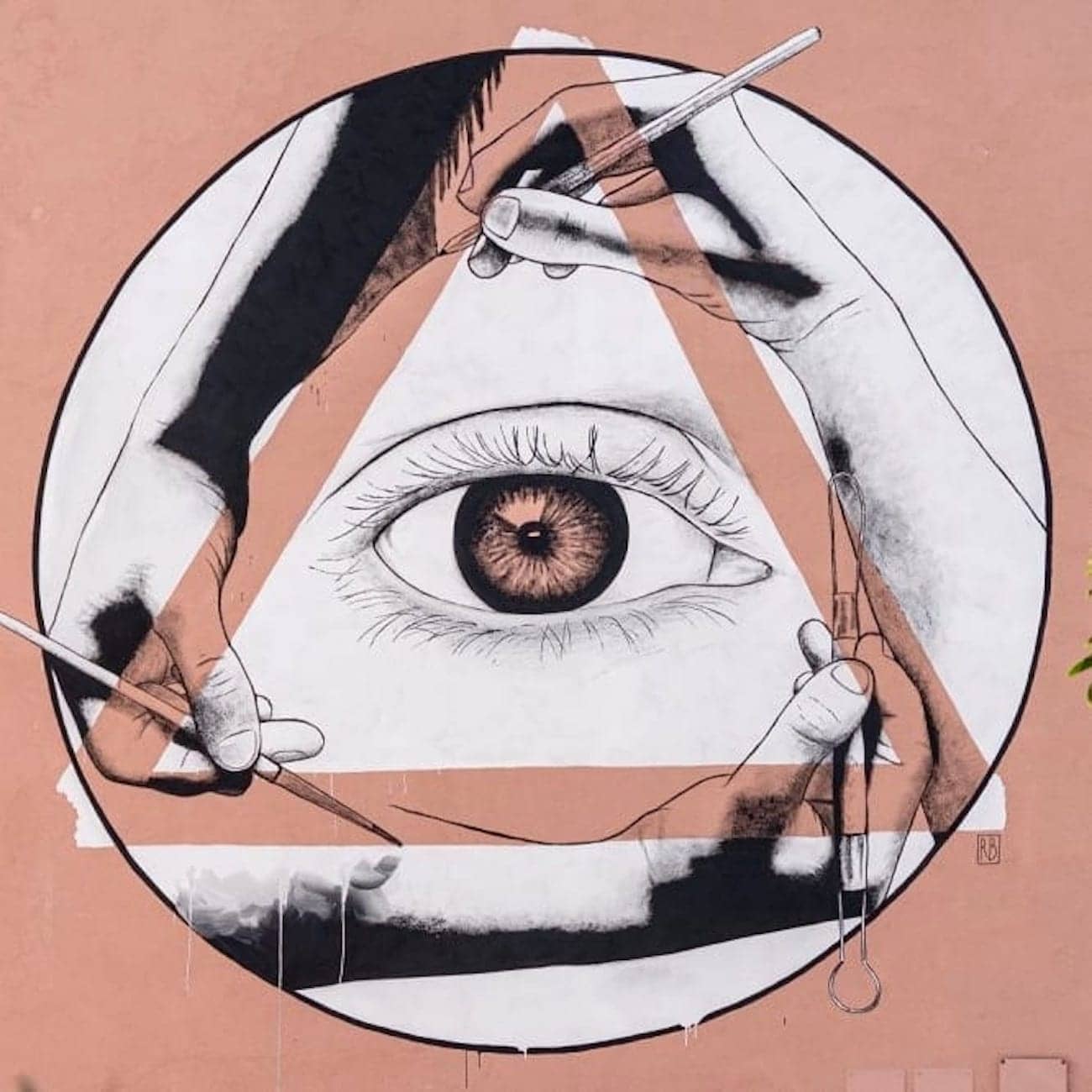
Riccardo Buonafede I Diamante, 2021
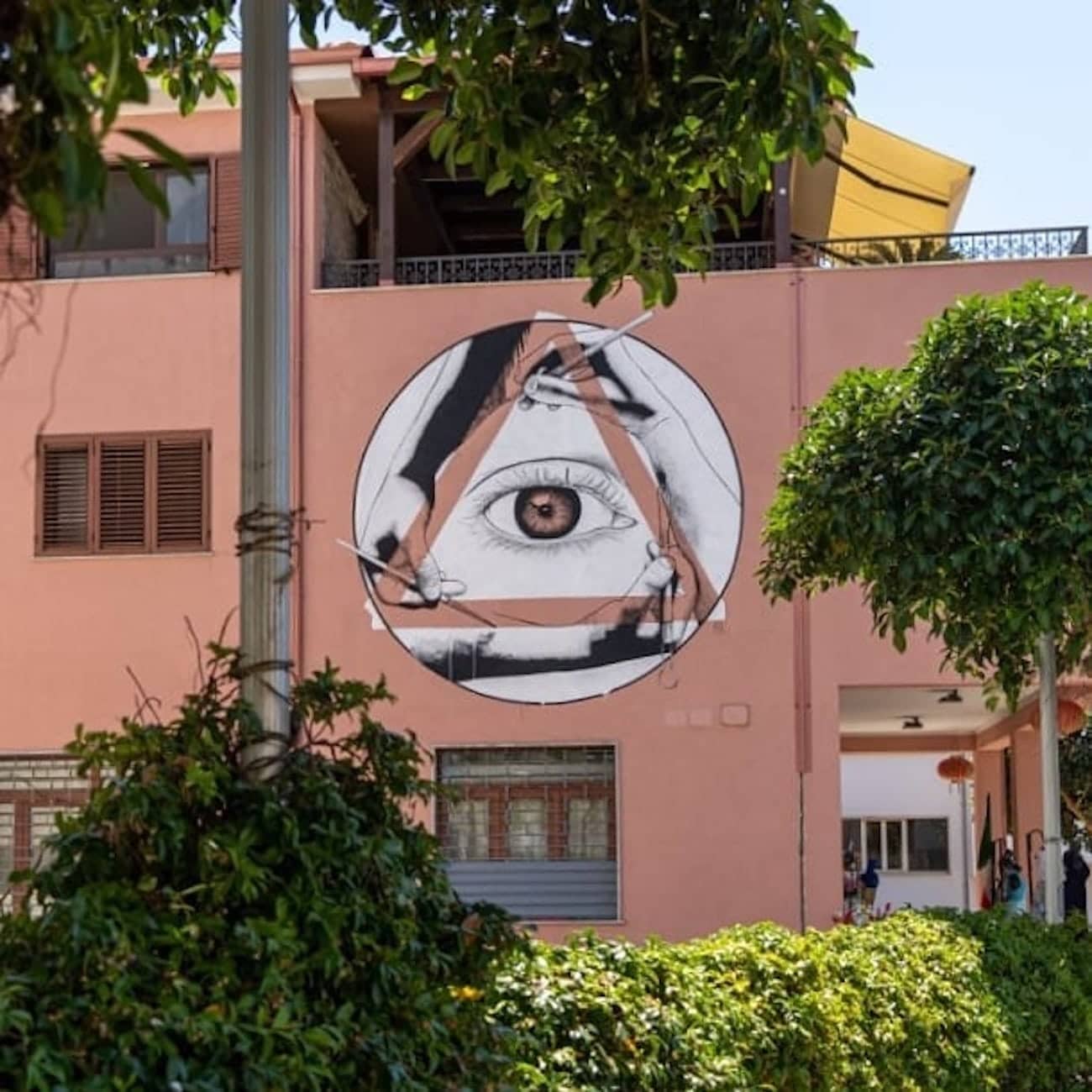
Where do you see the festival in the next few years? What are your ideas, plans, and dreams?
OSA – Operazione Street Art has become itinerant over the years and has had the opportunity to leave its mark in several cities of Calabria and southern Italy: Diamante, Santa Maria del Cedro, Fuscaldo, San Nicola Arcella, and Vietri di Potenza (Basilicata), as well as to create important collaborations with other festivals such as Manufactory Project of Comacchio or Gulìa Urbana, another festival born in Calabria. My biggest dream has always been to realize something that could enhance Calabria, my land, and that I could realize myself here, without having to leave, without having to necessarily emigrate to other places. My biggest dream, which is to “stay”, I can say that I have already achieved.
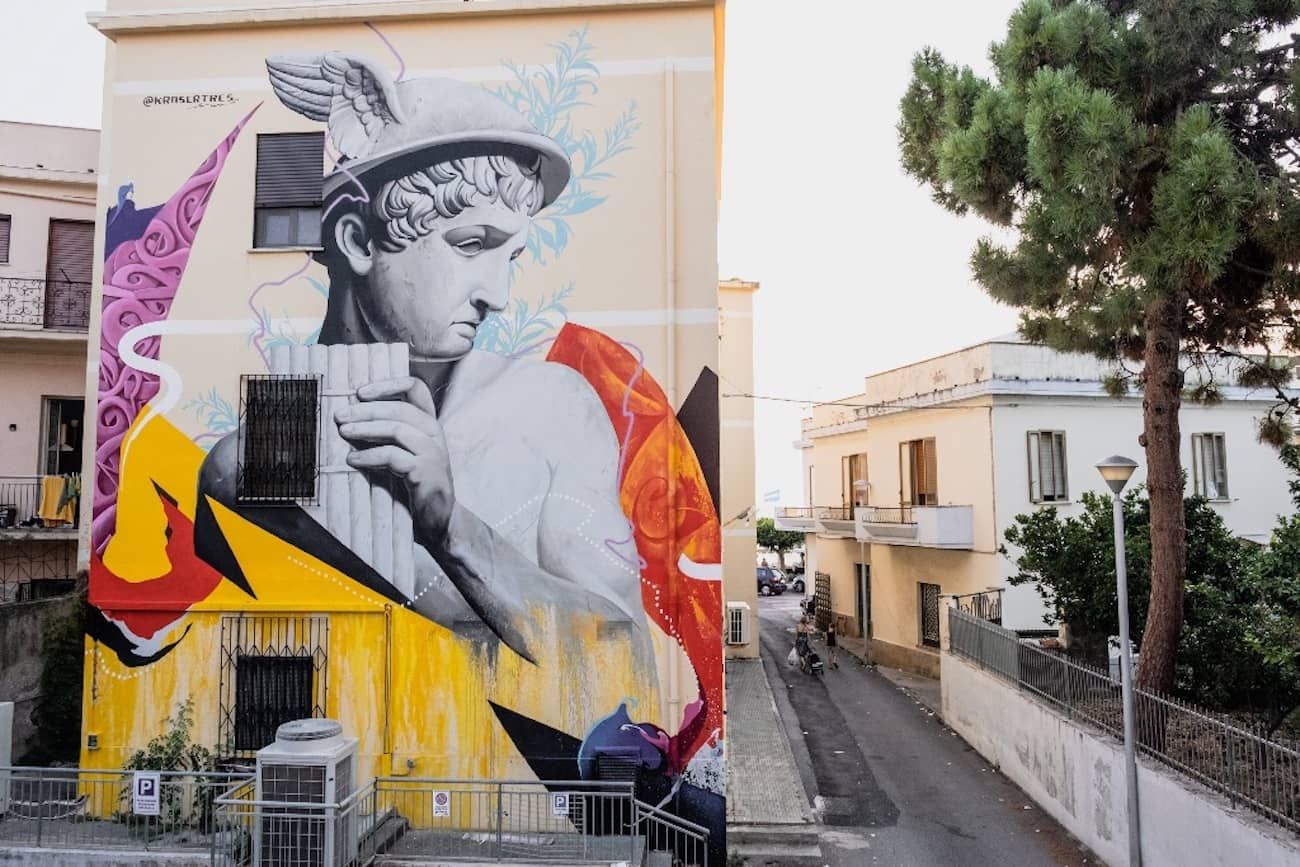
Kraser I Diamante, 2021
Antonino Perrotta aka Attorrep
Diamante, Italy
Facebook diamantemurales40
Facebook osaoperazionestreetart
Instagram diamante_murales_40
Instagram osaoperazionestreetart
Instagram attorrep
_______________________________________
Pictures © OSA Operazione Street Art
September 2021
by Laura Vetter


